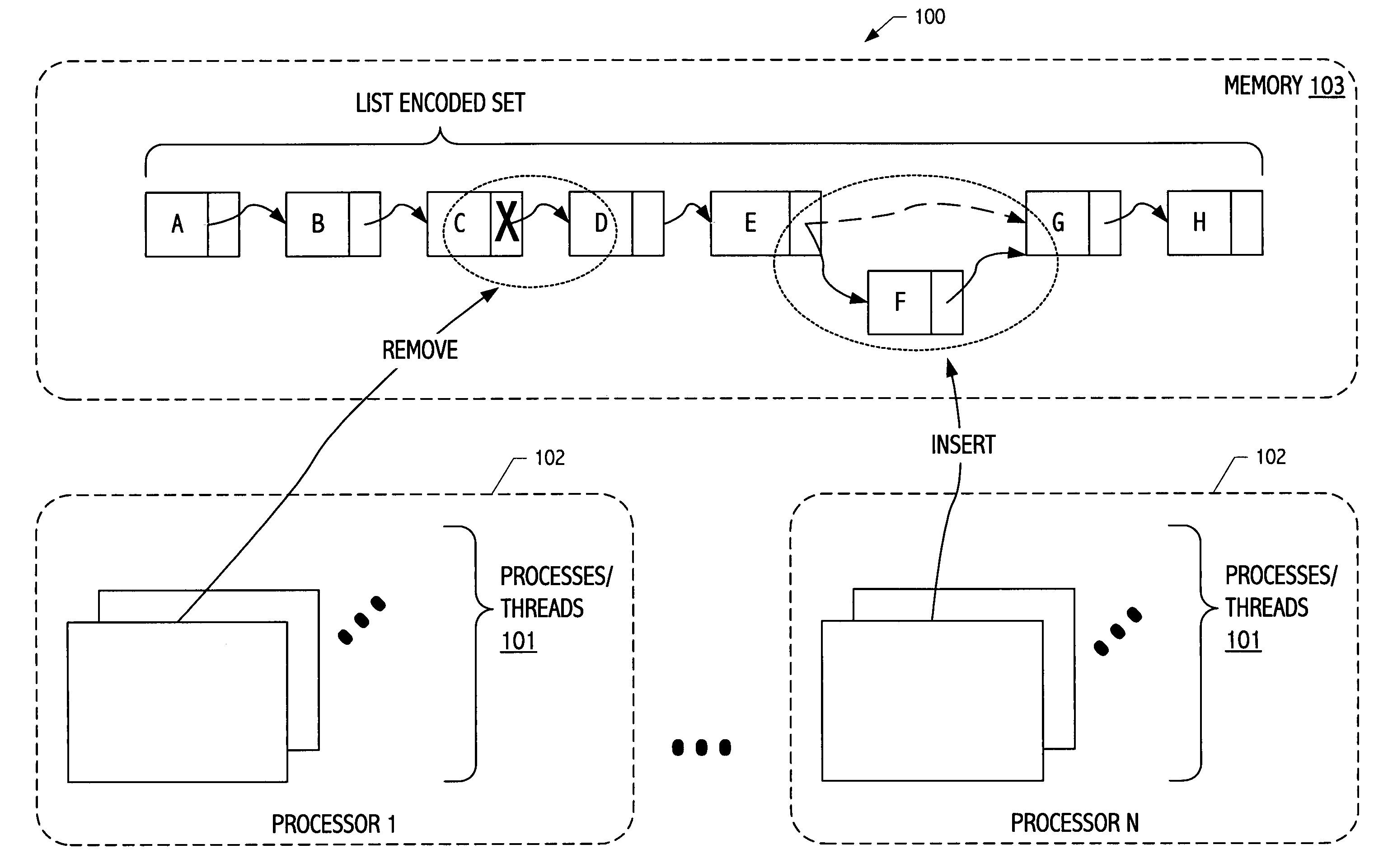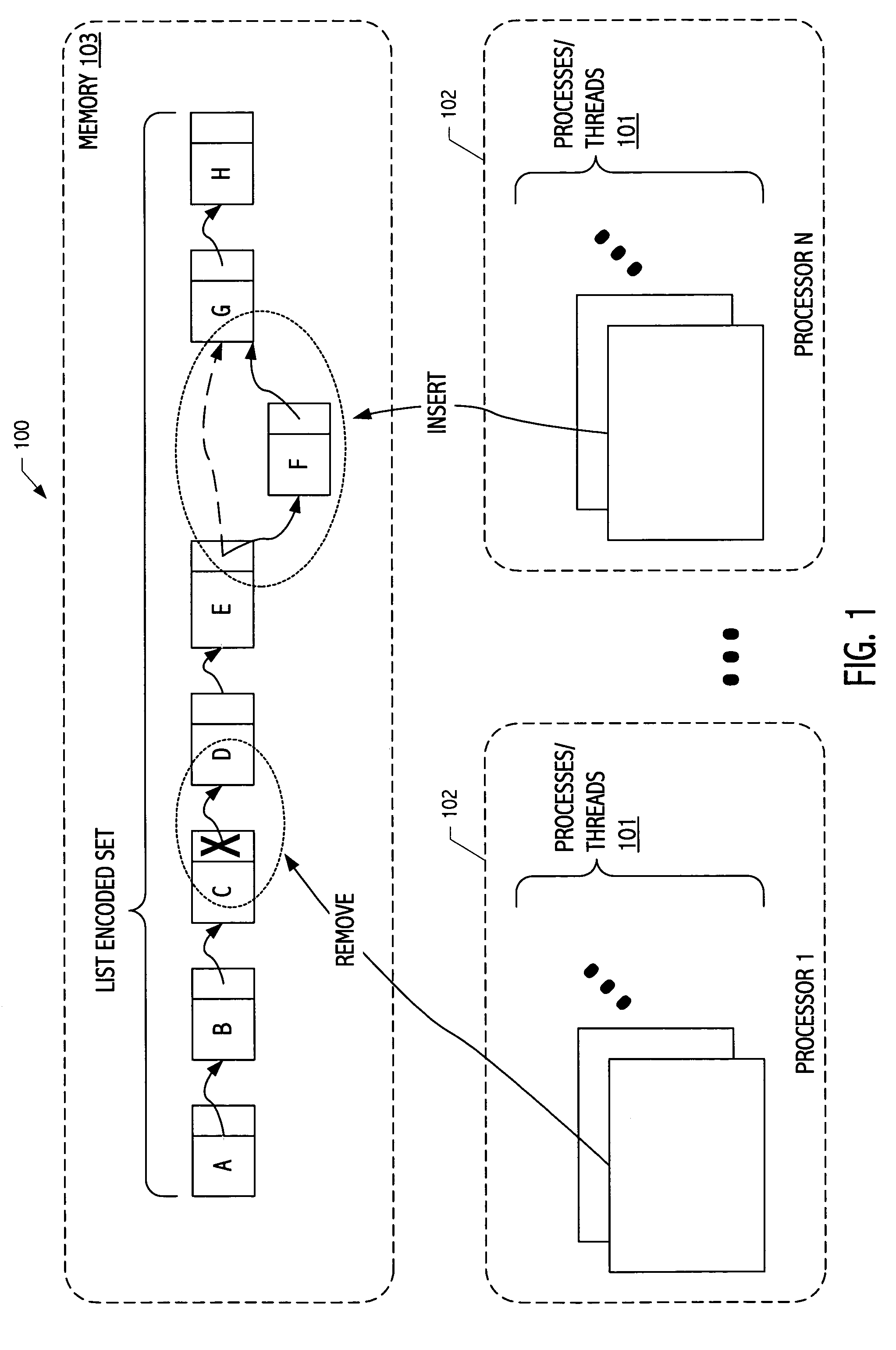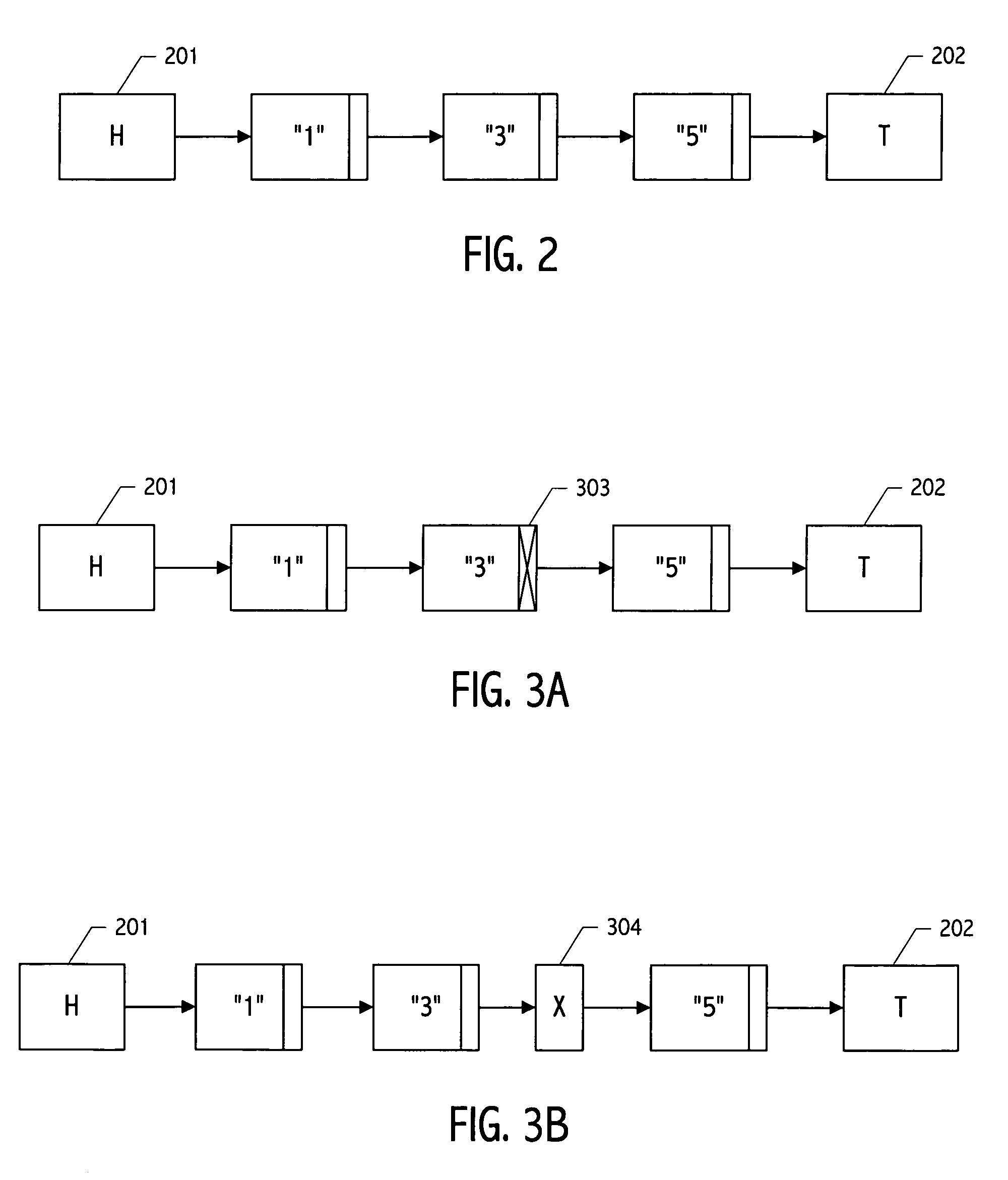Linked-list implementation of a data structure with concurrent non-blocking insert and remove operations
a data structure and non-blocking technology, applied in the direction of interprogram communication, multi-programming arrangements, program control, etc., can solve the problems of implementation itself not being linearly linear, affecting the performance of the implementation, and affecting the usability of the implementation, so as to achieve high usability and non-blocking, and effectively reduce contention. , the effect of increasing concurrency
- Summary
- Abstract
- Description
- Claims
- Application Information
AI Technical Summary
Benefits of technology
Problems solved by technology
Method used
Image
Examples
Embodiment Construction
)
[0028]The description that follows presents a set of techniques, objects, functional sequences and data structures associated with concurrent shared object implementations employing a compare-and-swap (CAS) primitive in accordance with an exemplary embodiment of the present invention. An exemplary non-blocking, linearizable implementation of a set using a linked-list-type data structure is illustrative. However, techniques, objects, functional sequences and data structures presented in the context of a concurrent set implementation will be understood by persons of ordinary skill in the art to describe support and functionality suitable for other collections of elements, such as ordered sets, multi-sets or other abstract data types that employ similar access semantics. Similarly, other synchronization primitives may be employed. Although use of a compare-and-swap (CAS) primitive is presently preferred, other primitives such as a locked load / store-and-compare (LL / SC) instruction pair...
PUM
 Login to View More
Login to View More Abstract
Description
Claims
Application Information
 Login to View More
Login to View More - R&D
- Intellectual Property
- Life Sciences
- Materials
- Tech Scout
- Unparalleled Data Quality
- Higher Quality Content
- 60% Fewer Hallucinations
Browse by: Latest US Patents, China's latest patents, Technical Efficacy Thesaurus, Application Domain, Technology Topic, Popular Technical Reports.
© 2025 PatSnap. All rights reserved.Legal|Privacy policy|Modern Slavery Act Transparency Statement|Sitemap|About US| Contact US: help@patsnap.com



